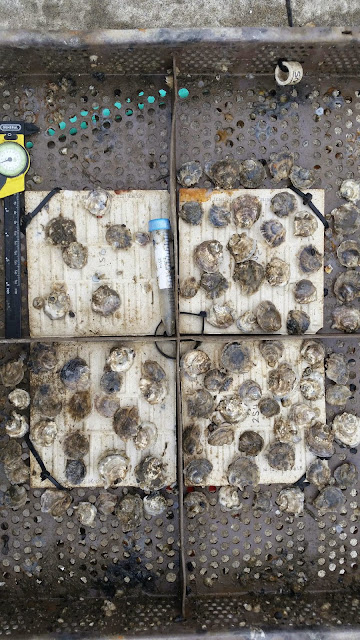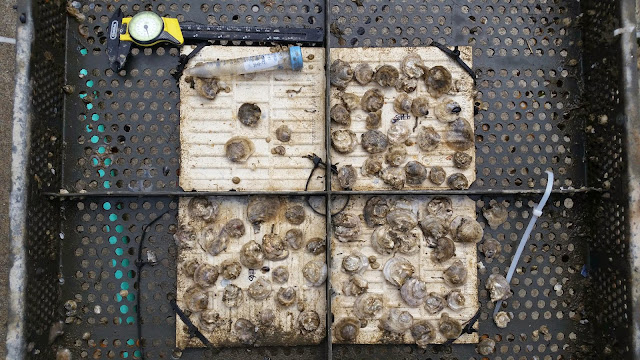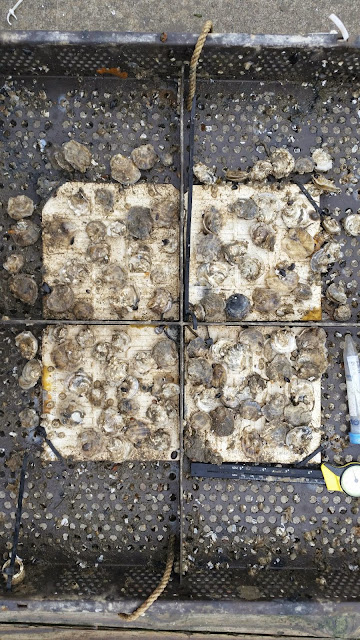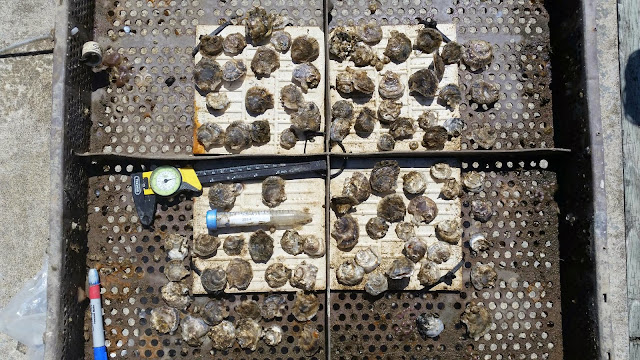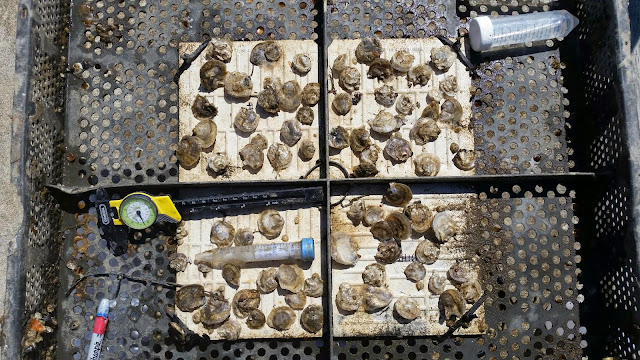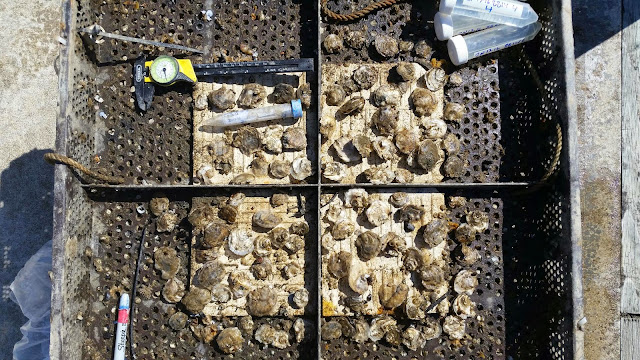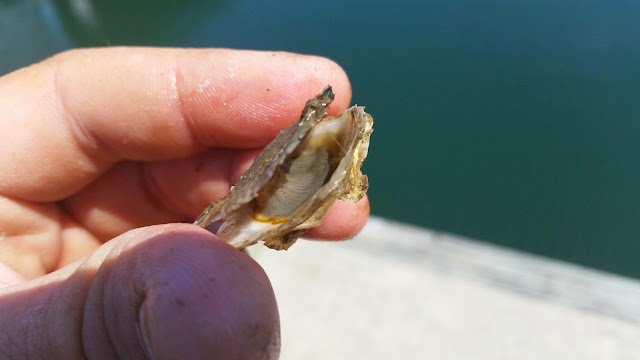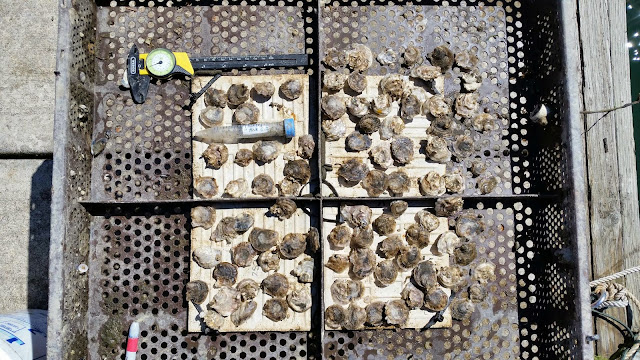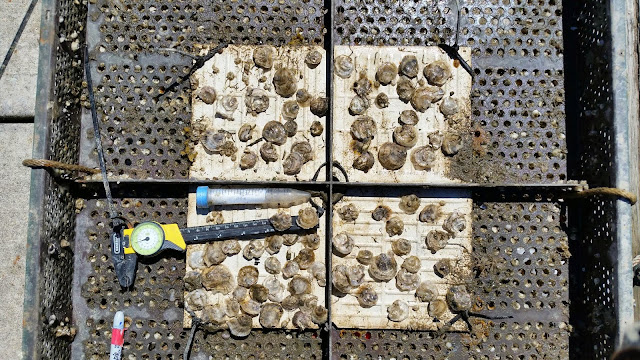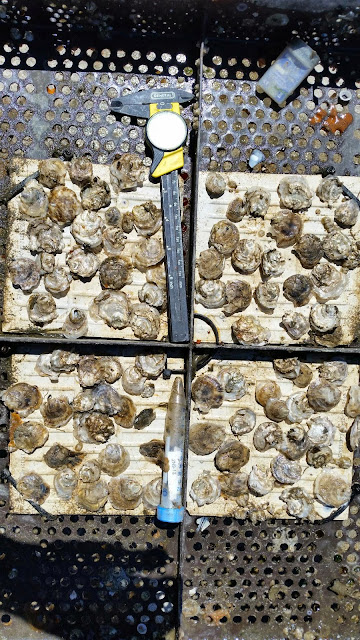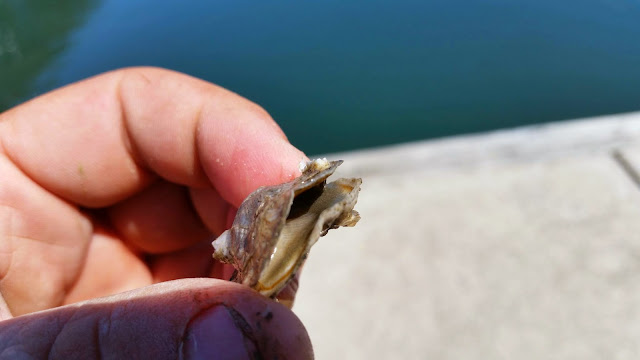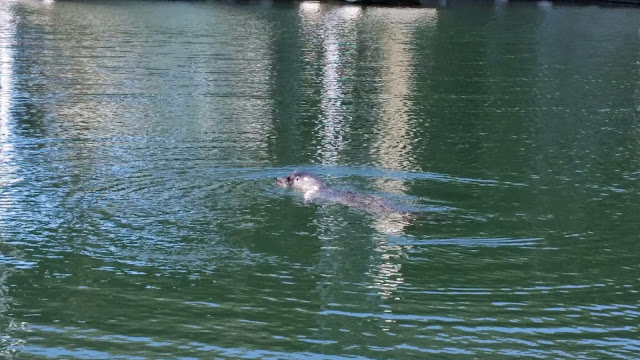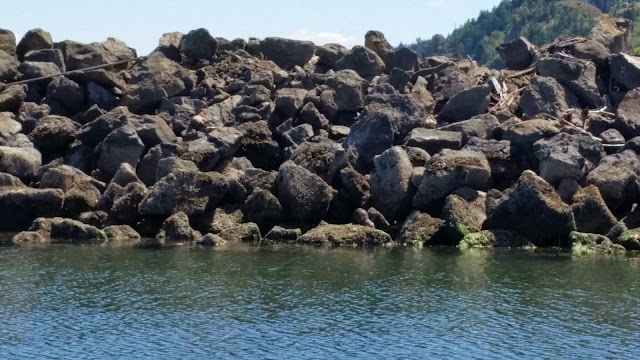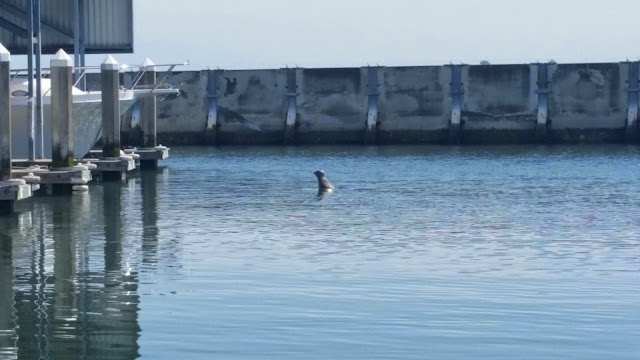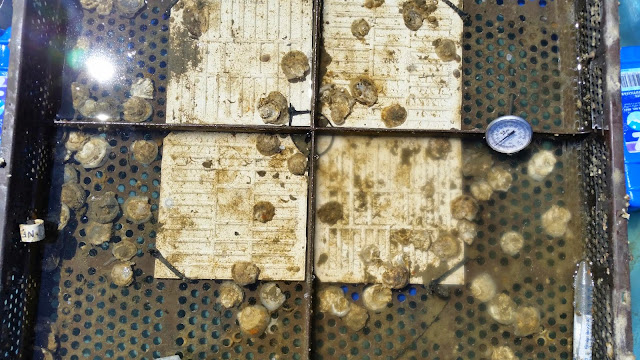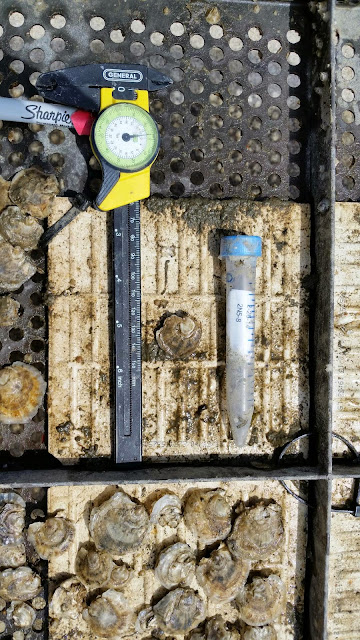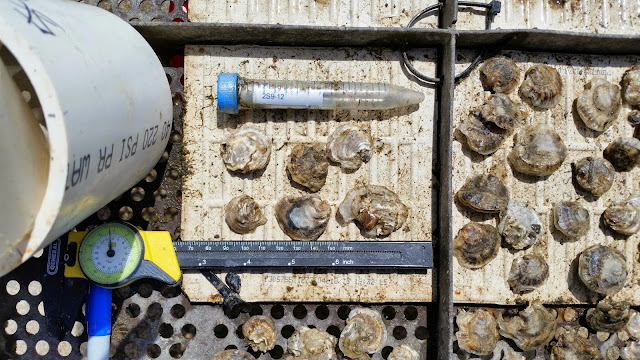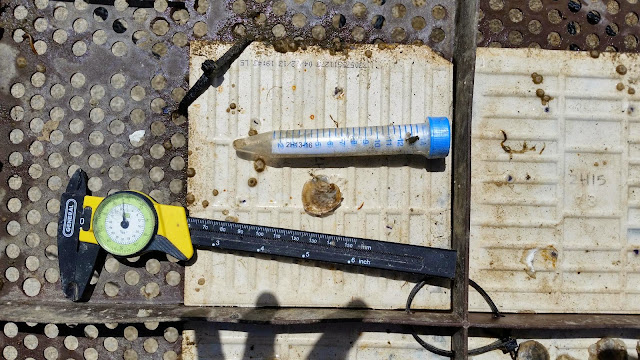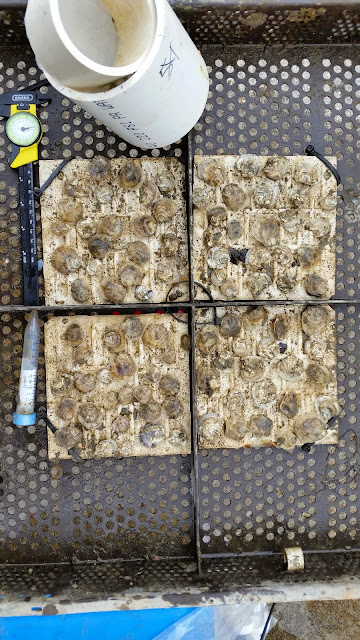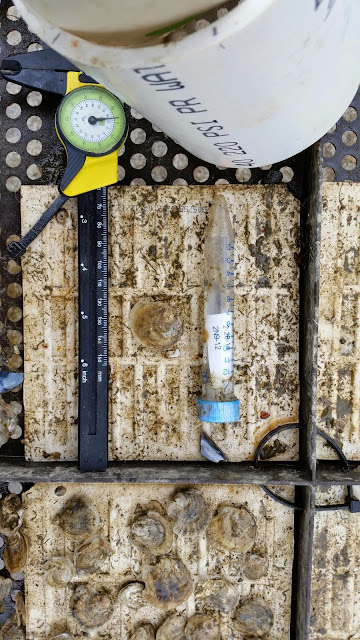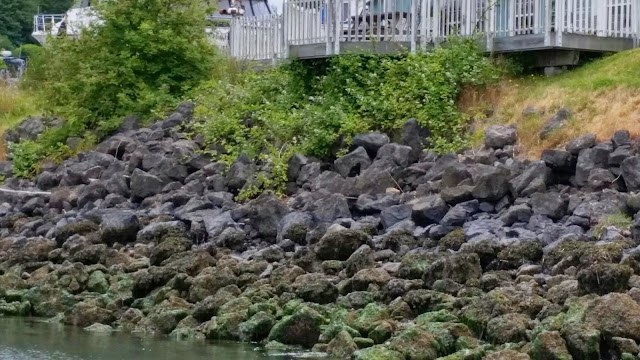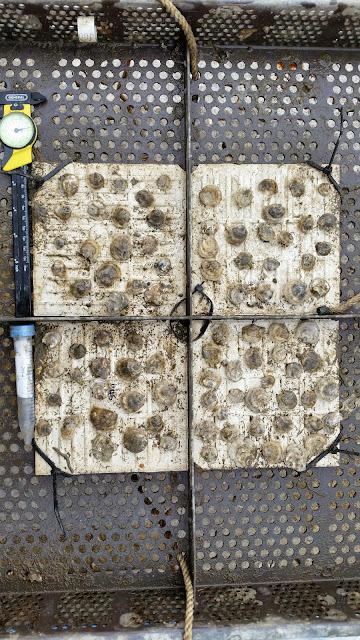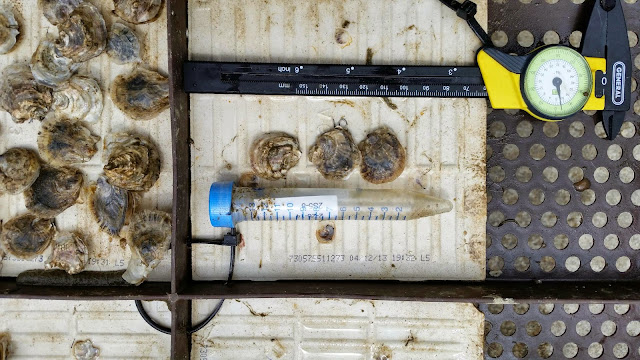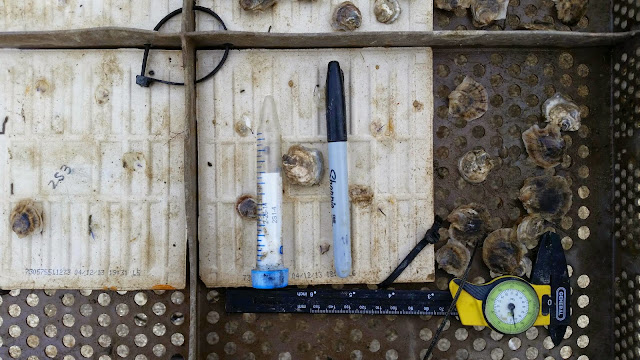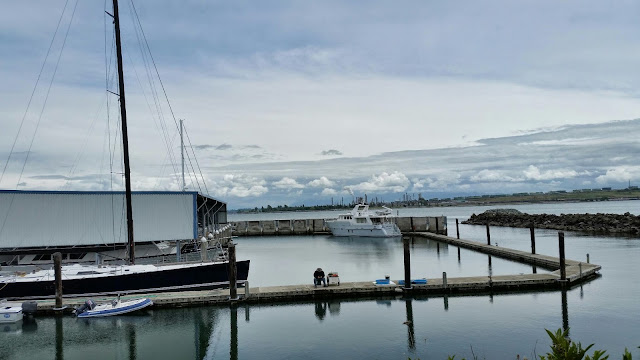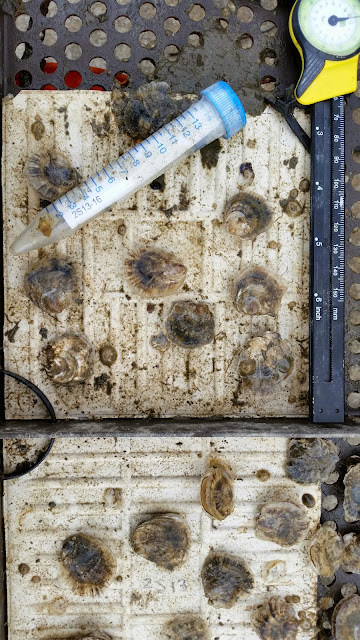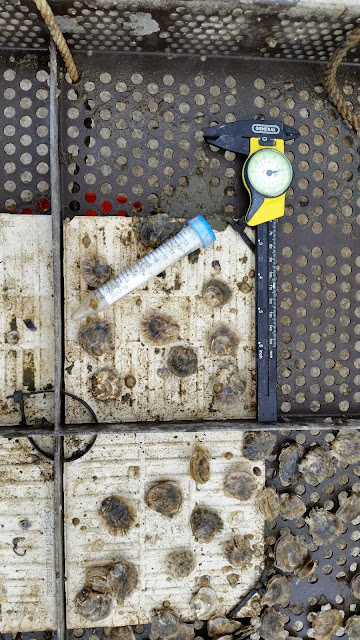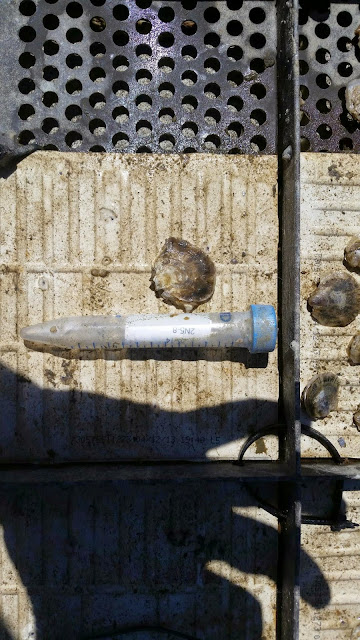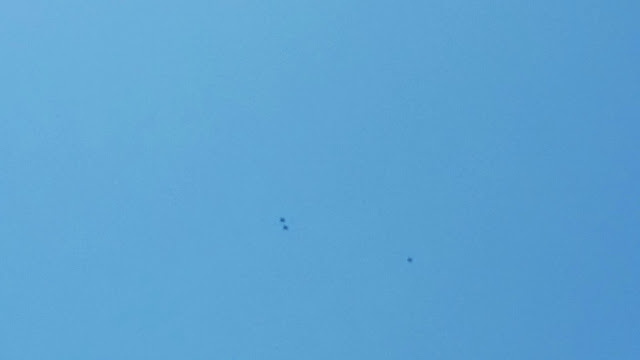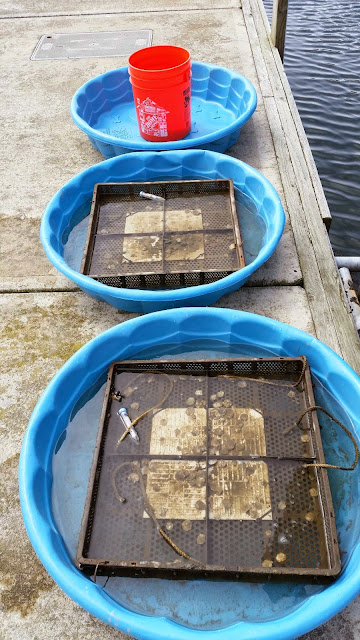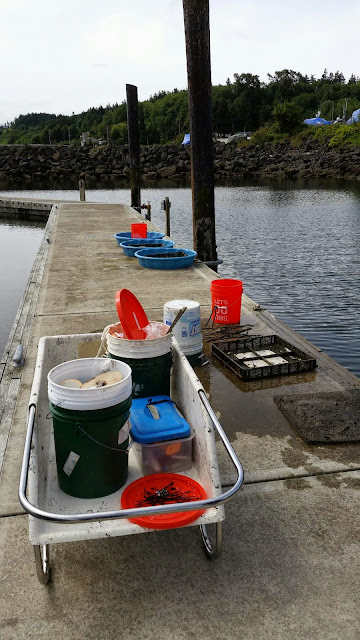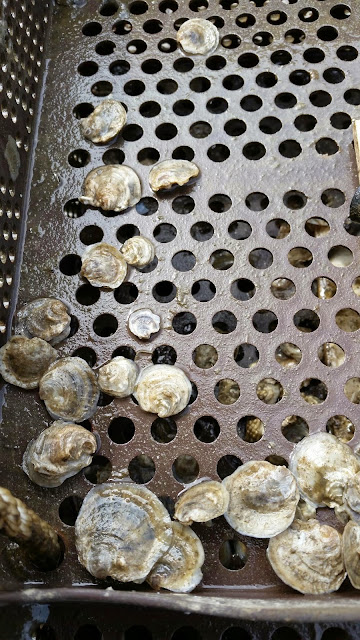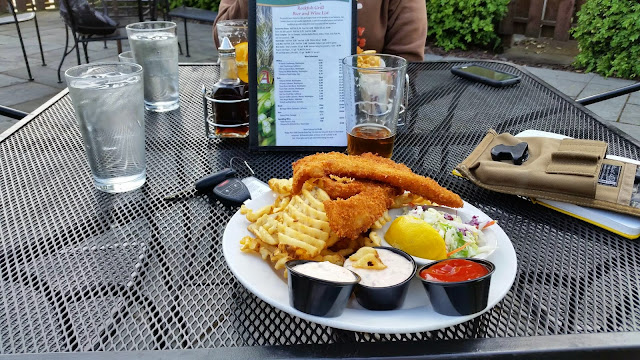Just for toots and googles I worked up the survivorship data from June just to see where we stand number wise out in the field. This comes from the weekly counts of gapers and closed animals which together make up the total number of living animals. These numbers are tentative and will be verified in the future when we do a full scale work up of the samples in August or September for the annual sample taking.
All numbers are for living animals only.
| Oyster Bay | N | H | S |
| 1-4 | 73 | 86 | 97 |
| 5-8 | 63 | 56 | 0 |
| 9-12 | 85 | 97 | 1 |
| 13-16 | 0 | 12 | 93 |
| Total | 221 | 251 | 191 |
| | | |
| Manchester | N | H | S |
| 1-4 | 90 | 96 | 65 |
| 5-8 | 95 | 92 | 93 |
| 9-12 | 61 | 89 | 98 |
| 13-16 | 87 | 79 | 94 |
| Total | 333 | 356 | 350 |
| | | |
| Fidalgo | N | H | S |
| 1-4 | 96 | 93 | 93 |
| 5-8 | 97 | 99 | 93 |
| 9-12 | 93 | 87 | 97 |
| 13-16 | 110 | 91 | 87 |
| Total | 396 | 370 | 370 |
While there has been a pretty major loss in Oyster Bay, I think we can safely proceed into year 2 with enough animals to get significant data from their development as well as Year 2 reproductive effort.
Also in previous counts Manchester had the highest survival but is now well below that of Fidalgo. I think this is due to the much warmer sunnier conditions at Manchester which lead to a 10% mortality event in the beginning of May and may continue to cause a small 1-2% mortality each month during repro sampling.
This info is also really cool when you compare it to the number of Brooders I've found over the course of the season for each population at each site.
| Total Brooders | Manchester | Oyster Bay | Fidalgo |
| N | 1 | 15 | 2 |
| H | 1 | 5 | 0 |
| S | 1 | 32 | 11 |
| 1st brood | 6/18/2014 | 5/29/2014 | 6/6/2014 |
| | | |
| | *1N trays were sampled twice in one sample date | |
Percent brooders from each pop for entirety of sampling period is as follows
| Percent Brood | Manchester | Oyster Bay | Fidalgo |
| N | 0.30% | 6.79% | 0.51% |
| H | 0.28% | 1.99% | 0.00% |
| S | 0.29% | 16.75% | 2.97% |
So almost 17% of the South Sound population at Oyster Bay has spawned and about 3% of the same population at Fidalgo has spawned. It blows me away that they are nearly 6 times as productive as the Dabob population in their home site but at Manchester they are not significantly different. Its also cool that they are twice as productive as the Northern population in South sound and almost 5 times more productive at Fidalgo bay.
Bonnie has suggested to me that the animals taken from Fidalgo for the original broodstock are possibly from a population that is being restored with animals from South Sound. This could be leading to an outbreeding depression with regards to local adaptation in the northern population and the reason the South sound animals are more prolific than the northern pops.
The other take away from these numbers is that it seems to me that Dabob animals are juggernauts that don't spawn. They have the highest survivorship at two of the sites (though Oyster Bay is arguable due to the many accidental exposure and other mishaps) and are very close to the North Sound populace at Fidalgo.
Eventually graphing all this with temps and tide times would be helpful to determine any differences in week to week spawn collections.
